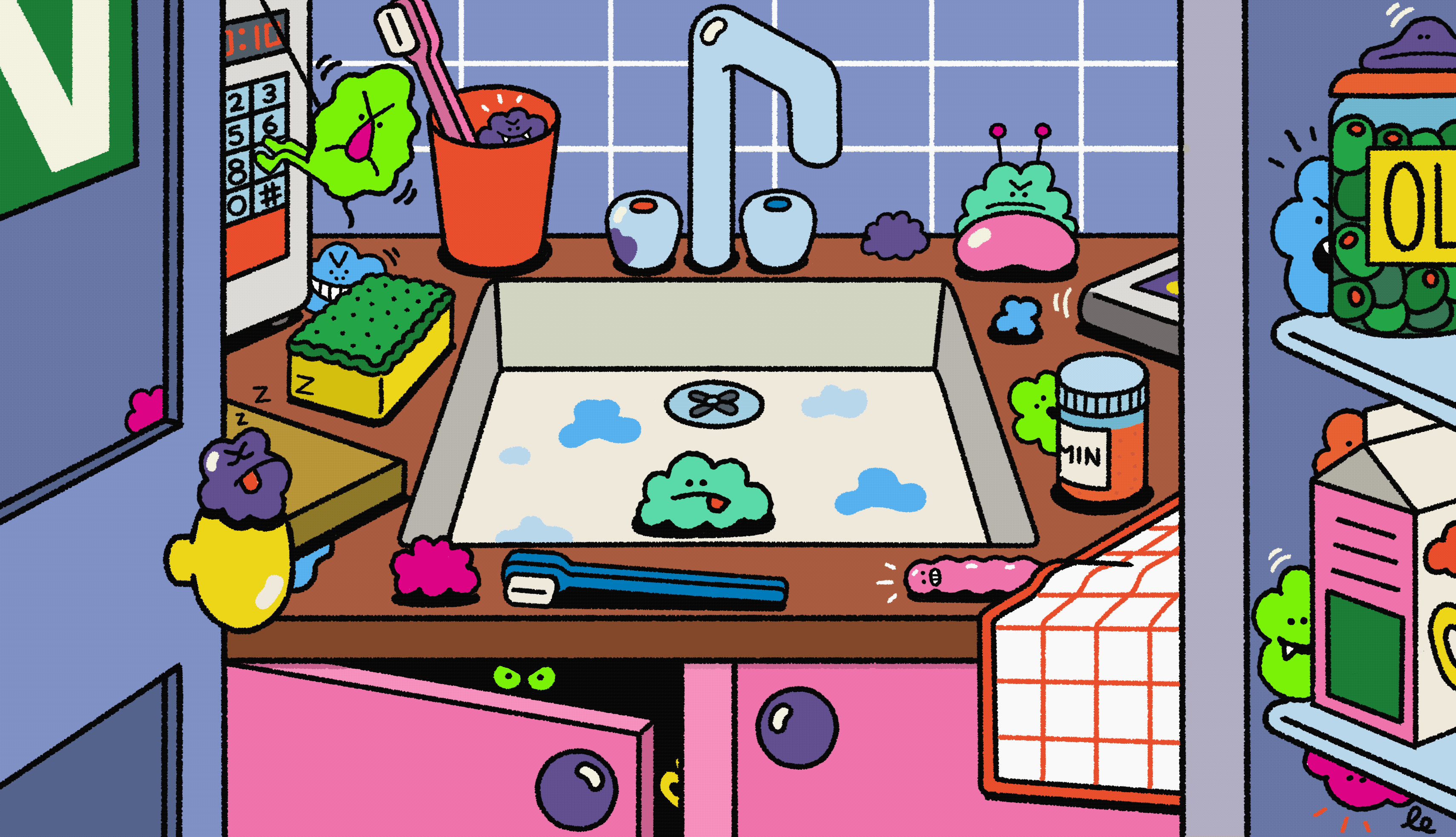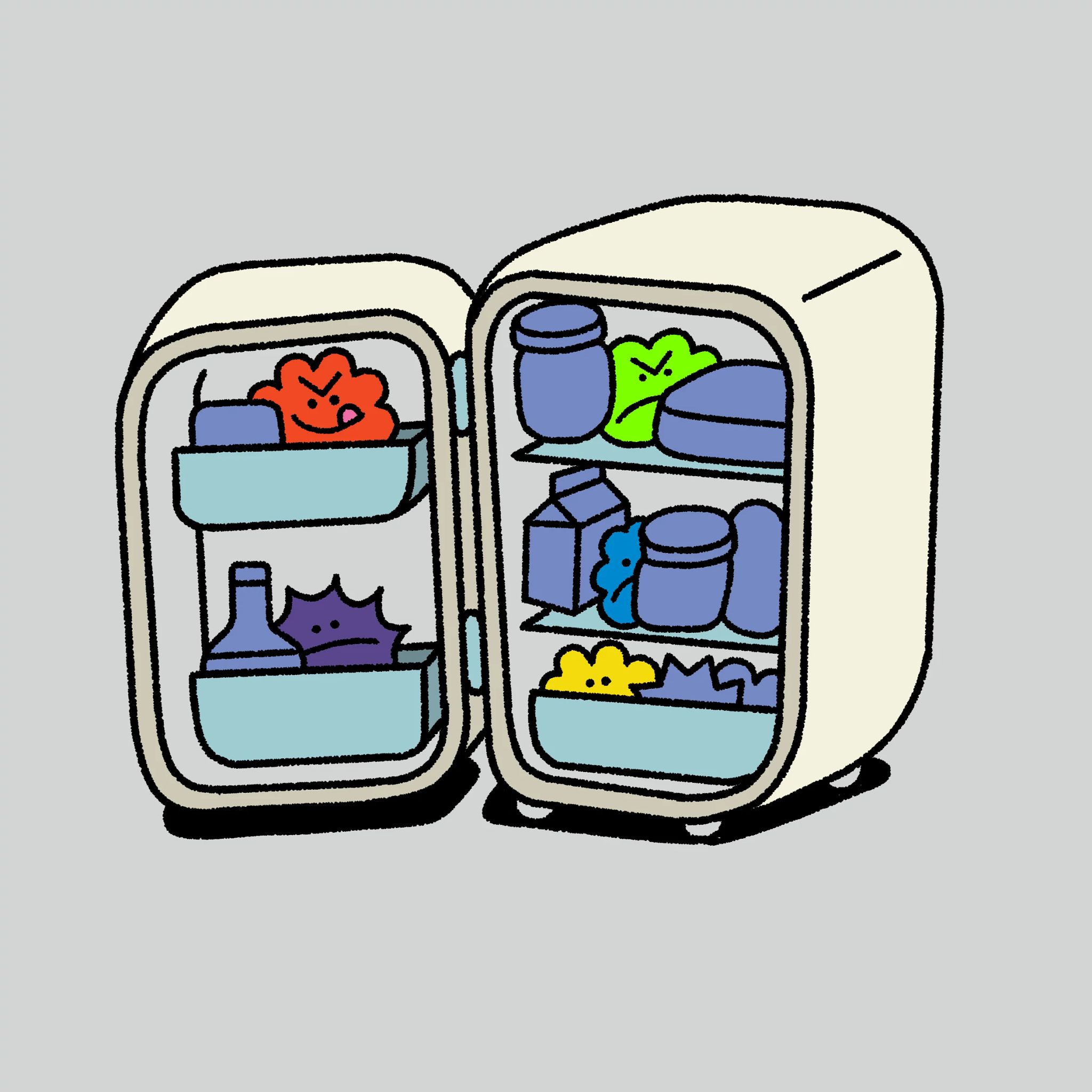AARP Hearing Center


A home may look sparkling clean, but it’s often teeming with microscopic germs you can’t see. These pathogens can spread illnesses that are dangerous for older adults, who often struggle with health issues that can make their immune systems weaker and put them at higher risk of infection.
And while there’s no way to get rid of all germs (and you wouldn’t want to because many help us), says Ernesto Abel-Santos, a professor of biochemistry at the University of Nevada, Las Vegas, you want to eliminate those that can be harmful.
How you get rid of them can vary depending on where they’re located. We talked to experts who identified the 25 germiest places in your home and how to clean them to get rid of unwanted viruses and bacteria.
1. Kitchen sponge
Bacteria thrive where there’s water and food, which makes a sponge one of the worst germ culprits, says Don Schaffner, a microbiologist and chair of the department of food science at Rutgers University in New Jersey.
A 2022 study published in the Journal of Applied Microbiology found that the best defense against bacteria lingering in a sponge is to let it dry between uses or run it through the dishwasher (experts say the sanitizing cycle is best). Schaffner also suggests placing the sponge in a bowl of water in the microwave for about 30 seconds.
In general, replace your sponge when it starts to become discolored or looks worn, Schaffner says. The most important thing is to regularly clean and disinfect it, he adds.
2. Cutting board
Raw meat and vegetables can carry E. coli, salmonella and listeria. Abel-Santos suggests using separate cutting boards — one for raw meat and one for everything else. Avoid wood cutting boards because indentations made in the wood by knives are hard to clean and disinfect, he says. Scrub cutting boards after each use with soap and hot water. After cutting meat, Abel-Santos suggests disinfecting them with diluted bleach (one part bleach to nine parts water) or washing plastic boards in the dishwasher.
3. Around the drain
These are “notorious places” for germs because they often stay moist, and bacteria feed off skin cells in the bathtub or bathroom sink and food particles in the kitchen sink, Schaffner says. In addition, a slimy, reddish biofilm can form on drains when bacteria attach to a surface, becoming more resilient, he explains. Scrub around the drain with a brush and a diluted bleach solution to remove biofilm.
4. Spice jars
As you sprinkle spices on your food, you might also transfer — or pick up — bacteria on your hands as you handle jars of cumin, paprika or chili powder. A 2022 study published in the Journal of Food Protection found people often spread bacteria to spice jars they use as they cook. The researchers asked people to prepare a meal of turkey patties and a salad. Afterward, the researchers detected bacteria from the turkey on 48 percent of the spice containers. To prevent cross-contamination, wash your hands before cooking and after handling raw meat. Use a hot, soapy cloth or disinfectant wipes to clean spice jars.


5. Refrigerator
Clean the inside regularly with hot, soapy water, especially the vegetable drawers because they hold raw produce, Abel-Santos advises. Spills drip downward, so clean trickles and accumulated substances inside the bottom of your fridge as well as along its bottom exterior edge.
If you think your refrigerator has been contaminated or it contained recalled food, the U.S. Centers for Disease Control and Prevention (CDC) recommends that you clean the inside, then use a solution of 1 tablespoon of bleach in 1 gallon of water to sanitize the interior.
6. Appliance handles
Don’t forget the refrigerator handle as well (and all appliance handles, such as on cabinets and drawers). If you’re cutting raw poultry or meat and then touch a handle, you may transfer germs, Abel-Santos says. Clean them with a hot, soapy cloth or disinfectant wipes.
Touching germ-covered surfaces is a significant way to spread colds, stomach flu and foodborne illnesses. The flu virus, for example, can last up to 48 hours on hard surfaces, according to the Hygiene Council, an international group of infectious-disease experts.
7. Doorknob
The same goes for doorknobs, which are perhaps one of the most-touched items in a home. But “it’s impractical to clean the doorknob every time someone touches it,” Abel-Santos says. “It’s better to wash your hands frequently to control the spread of infection.”
The CDC recommends humming the “Happy Birthday” song twice while scrubbing your hands to ensure you wash them long enough.
8. Countertops and table tops
Clean and disinfect any surface where food is prepared to remove foodborne bacteria that can cause illnesses. The risk is higher if you just made hamburgers on the kitchen counter compared with buttering toast, Schaffner says.
Places where raw food is prepared in the kitchen, moist areas, and household surfaces touched daily by many people, such as faucets and light switches, are hot spots for viruses and bacteria. The same goes for bathroom counters, which may pick up sprayed germs as you floss or rinse your toothbrush.
Kitchen and dining room tables also are breeding grounds for germs because people drop food on them, such as pieces of a ham sandwich, which can lead to a germier environment, Schaffner says. After eating, wipe tables with a damp sponge or towel with soap or an all-purpose cleaner. Use an easy-to-clean cloth or plastic table covering or placemats.





































































You Might Also Like
AARP Smart Guide: 41 Ways to Care for Your Home Appliances
Protect your wallet by doing these simple things to make your appliances work better and last longer
18 Ways You’re Using Your Microwave All Wrong
Maximize efficiency, safety and taste
5 Common Food Labels and What They Mean
Plus, what to know about the FDA’s new criteria for claiming a food is ‘healthy’